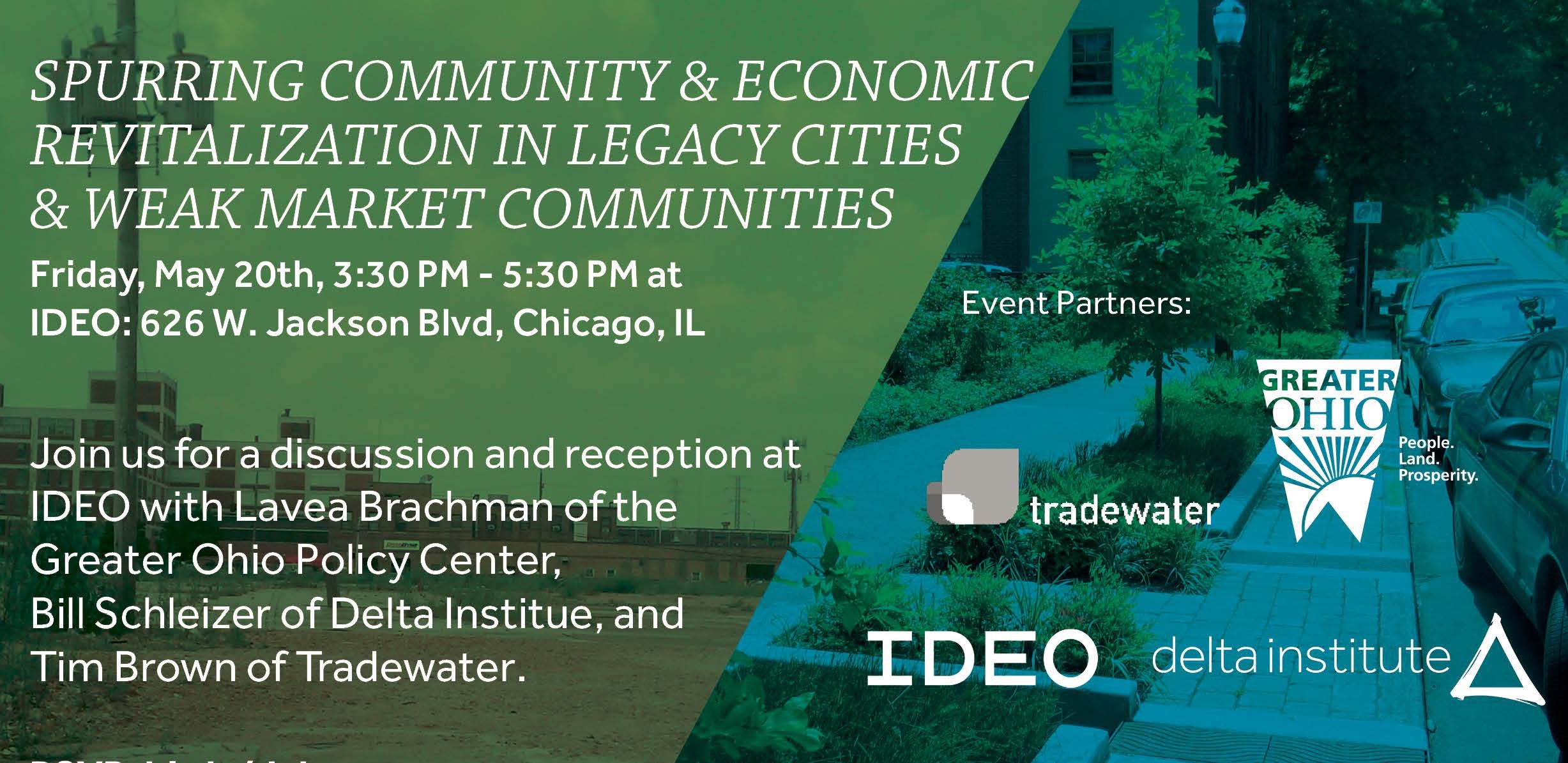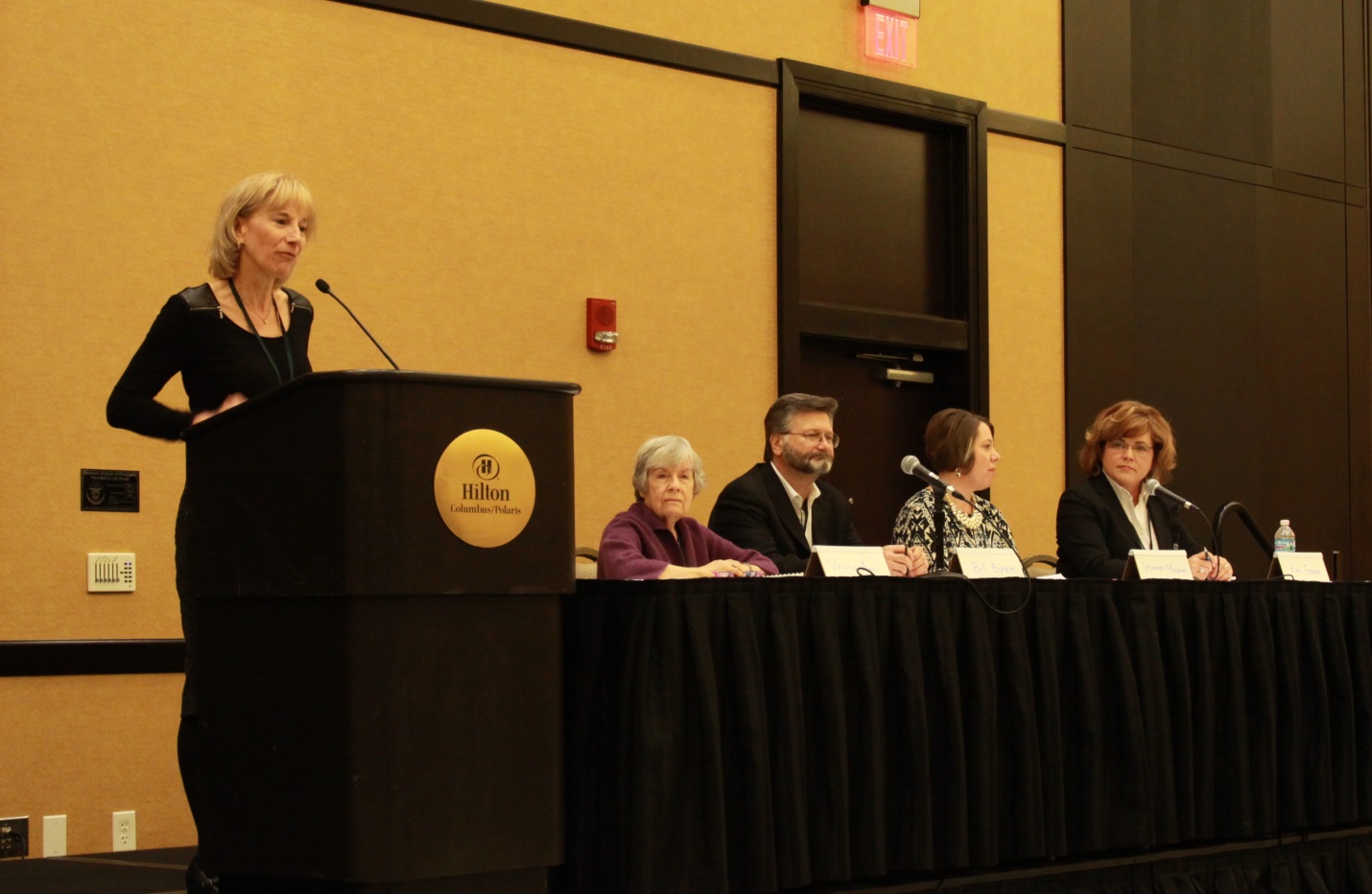By Jon Honeck, GOPC Senior Policy Fellow Introduction
On May 12, 2016, the Water Environment Federation (www.wef.org) held its “Great Water Cities 2016: Rainfall to Results in Action” conference in Chicago, IL. The focus of the conference was creating a holistic approach to managing stormwater in the 21st Century, and the panel discussions were organized around recommendations from WEF’s Rainfall to Results report. Attendees included water utility water leaders and industry representatives from across the country and as far away as Australia. GOPC’s Jon Honeck, Senior Policy Fellow, attended as part of our ongoing water and sewer infrastructure project to find new strategies to modernize Ohio’s aging infrastructure.
Background
Stormwater management is an issue that accompanies growing urbanization. Urbanization creates thousands of acres of impervious surfaces and removes the ability of the natural landscape to absorb water when it rains. Unfortunately, many U.S. cities in the early 20th century constructed “combined” sewer systems that mixed rain water and sewage water in the same tunnels, causing raw sewage to discharge into waterways during heavy rains. In recent decades, EPA enforcement of the Clean Water Act has forced cities around the country, including many in Ohio, to separate their combined sewer systems and find ways to hold millions of gallons of rainwater temporarily out of the sewer system. This is often accomplished by building deep storage tunnels, which are extremely expensive capital projects that take years to complete. New approaches, such as using “green infrastructure” that restores that ability of the landscape to capture stormwater runoff, are now taking center stage as cities look for ways to lower costs and provide more effective solutions.
Stormwater Utilities
There is an emerging consensus among water industry experts that the field needs a new paradigm, called a “stormwater utility,” and that governmental regulatory frameworks and planning approaches need to change to support this. Traditional municipal utilities have been organized around drinking water or sewer systems, each with their own user charges, infrastructure, and performance expectations. Stormwater management in its own right was usually an afterthought, except insofar as it was needed for basic flood control. A stormwater utility could take many forms, depending on the state and local regulations and needs, but the basic concept is an entity that can work on a large scale, across individual municipalities in a metro area, and even across an entire watershed, to plan and implement stormwater management.
One of the keys to the paradigm shift is the concept of stormwater runoff as a commodity that has a price. Districts around the country are implementing dedicated stormwater fees to create an ongoing revenue source for operation and maintenance. Afternoon speaker Howard Neukrug (Senior Fellow at the U.S. Water Alliance) who implemented Philadelphia’s nationally renowned green infrastructure program, noted that the foundation of the city’s program was a parcel-based stormwater fee and redevelopment regulations that require capture of the first 1.5 inches of rainfall from new or renovated buildings. Sometimes existing regulatory arrangements make it difficult for utilities to work on scale commensurate with the need. Morning panelist Karen Sands, Director of Sustainability for the Milwaukee Metropolitan Sewerage District, related that MMSD has an aggressive green infrastructure program, but in order to meet its stormwater capture targets by 2035, the district would have to spend at an annual rate 18 times higher than its current level. MMSD is now looking at other public private partnerships as a potential solution.
In other areas of the country, federal and state regulatory frameworks create an urgent need for local governments to cooperate. As explained by panelist L. Preston Bryant, Senior V.P. of McGuireWoods Consulting and former Secretary of the Virginia Department of Natural Resources, Virginia law treats the US EPA’s Total Maximum Daily Load (TMDL) regulation for Chesapeake Bay as a joint responsibility between the state and local governments and this has spurred regional collaboration. The state of Virginia also has a Stormwater Local Assistance Fund as part of its EPA clean water revolving loan program that will pay for up to 50% of the costs of local projects. The state of Maryland also has a stormwater law to help protect the Chesapeake. Prince George’s County, MD, is an example of a county that moved ahead with a stormwater fee that is being used to fund a public-private partnership that is aggressively creating green infrastructure.
Asset Management
Asset management for both capital projects and human resources was another theme of the conference. It is obvious that there are a variety of approaches to maintaining green infrastructure and that there is no agreement on best, or even standard, practice. David St. Pierre, Executive Director of the Metropolitan Water Reclamation District of Greater Chicago, explained that MWRD shares the initial installation costs with local governments and then maintains agreements in which the local governments are responsible for long-term maintenance. In Baltimore, Randy Chow, Director of the Baltimore Department of Public Works explained that the department wants neighborhood organizations to play a role in maintaining green infrastructure. Korey Gray, Business Development Officer of DC Water, described how the city public works department helps to maintain green infrastructure in Washington.
Several of the afternoon panelists presented visions of both optimism and pessimism about the future adaptability of water utilities in general. On an optimistic note, Marcus Quigley, CEO and Founder of Opti, a data analysis firm, noted that rapid advances in the field of sensor technology were making it possible to have real time monitoring and control of individual assets, leading to the potential for huge gains in efficiencies from existing infrastructure. On a more pessimistic note, William Stowe, CEO and General Manager of Des Moines Water Works discussed his organization’s decision to file suite against upstream quasi-governmental water management organizations for allowing agricultural runoff (excessive nitrates) to pollute the Des Moines River. In his view, as long as industrial agriculture remains outside of the EPA stormwater and pollution control framework, agricultural areas in the Midwest will have to invest heavily in equipment to clean excessive nitrates from their drinking water, leading to excessive financial burdens on urban residents.
The conference made it clear that stormwater management is a dynamic, emerging field in which information-sharing across geographies and across professional boundaries is essential. There is a real desire for innovation and experimentation as local utilities try different approaches. The need for creativity will become even more important as the 21st Century matures and the effects of climate change are felt more acutely.











